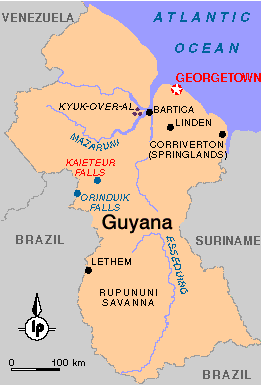“Muslims in Guyana: History, Traditions, and Conflict and Change” is a modest attempt to begin recording the history and traditions of Guyanese Muslims. At the time of publication, about a decade ago, nothing was published on this subject. This paper became a source of reference and stimulated others to write on the subject. Unfortunately, after September 9/11 some alarmist groups and individuals have used this paper to sensationalize the world of possible al Qaeda cells in Guyana because they perceived Wahabism to be on the rise in Guyana. This is totally unfounded and wasn’t the emphasis of this paper. The schism that between “traditionalists and reformists,” which has now abated does not make Guyana a fertile ground for radical Islam.
This paper traces the origins of the Muslims, their cultural heritage and their “Indo-Iranian” practices that came under scrutiny after “Arabization” or the orthodox movement, which began in the seventies. “Muslims in Guyana: History, Traditions, Conflicts and Change” brings to light aspects of the “Indo-Iranian” traditions that are controversial and have often divided the Muslims into two camps– the “Indo-Iranian” and the “Arab.” Opponents of “Indo-Iranian” traditions such as Milad-un-Nabi (Melaad-Sharief), Tazim, and the singing of Qasida call these practices Bidah or Innovation.
It is impossible to disconnect Guyanese Muslims from the Sub-Continent since it is their ancestral home. Hence,”Muslims in Guyana: History, Traditions, Conflict and Change,” returned to medieval Islamic India in order to understand the cultural and political landscape of this fascinating land of the Mughals who built the famous Taj Mahal, Qutub Minar and the Shalimar Gardens. In light of this, the history of Urdu was incorporated since it is impossible to discuss Islamic India without Urdu. Urdu and Islam “go hand in hand” in the Sub-Continent. In conclusion, the connection between Guyanese Muslims and the Sub-Continent, in particular Pakistan, since 1947 was discussed. The history of Hindustani Muslims began not in Guyana in 1838, but in India since A.D 711. India reached its cultural zenith during the Muslim rule. This great Tahzib (Civilization) is something that every Guyanese Muslim can call his/her own and be proud of.
Introduction
The birth of Islam in Arabia and its later spread to South Asia and Africa had rippling effects not only on that region’s social and political history, but international ramifications as it spread from there to other parts of the world, including Guyana. Islam travelled to the shores of Guyana, Suriname and Trinidad largely because of the institutions of slavery and indentureship.
Guyana is a multi-ethnic republic situated on the northern coast of South America (see Figure 1). The country is inhabited by nearly one million people who are heterogeneous in terms of ethnicity and religious affiliation. Amerindians are the indigenous people of Guyana. In the seventeenth century the country became populated by waves of immigrants brought in under colonialism which introduced plantation slavery and the indenture system. Thus the Dutch and later the British colonial mercantile interests shaped the socio-cultural environment of the country. Guyana remained a British colony until 1966 when it achieved independence, which marked the transfer of political power to the Afro-Christian population. However, the majority are of South Asian descent and form roughly 51% of the population (see Figure 2). Yet, they remained disenfranchised until the 1992 general elections.
South Asians, who are mostly Hindus and Muslims, have always had a cordial relationship among themselves. It would seem that these two groups had come to a mutual understanding of respecting each other’s space while culturally and even linguistically identifying with each other. In fact, Hindus and Muslims share a history of indentured labour, both having been recruited to work in the sugar cane plantations. They came from rural districts of British India and arrived in the same ships. Furthermore, Muslims and Hindus in Guyana did not experience the bloody history of partition as did their brethren back in the subcontinent. Also, the lack of Hindu/Muslim friction in Guyana may be attributed to the Cold War and to their common foe–the Afro dominated government, which practised discrimination against them (for religious composition, see Figure 3).
 |
| MAP: Fig. 1. Guyana: administrative divisions, 1991. |
According to the Central Islamic Organization of Guyana (CIOG), there are about 125 masjids scattered throughout Guyana. Muslims form about 12% of the total population. Today in Guyana there are several active Islamic groups which include the Central Islamic Organization of Guyana (CIOG), the Hujjatul Ulamaa, the Muslim Youth Organization (MYO), the Guyana Islamic Trust (GIT), the Guyana Muslim Mission Limited (GMML), the Guyana United Sad’r Islamic Anjuman (GUSIA), the Tabligh Jammat, the Rose Hall Town Islamic Center, and the Salafi Group, among others. Two Islamic holidays are nationally recognized in Guyana: Eid-ul-Azha or Bakra Eid and Youman Nabi or Eid-Milad-Nabi. In mid-1998 Guyana became the 56th permanent member of the Organization of Islamic Conference (OIC). Guyana’s neighbour to the east, Suriname, with a Muslim population of 25%, is also an OIC member state.





Be the first to comment on "MUSLIMS IN GUYANA"